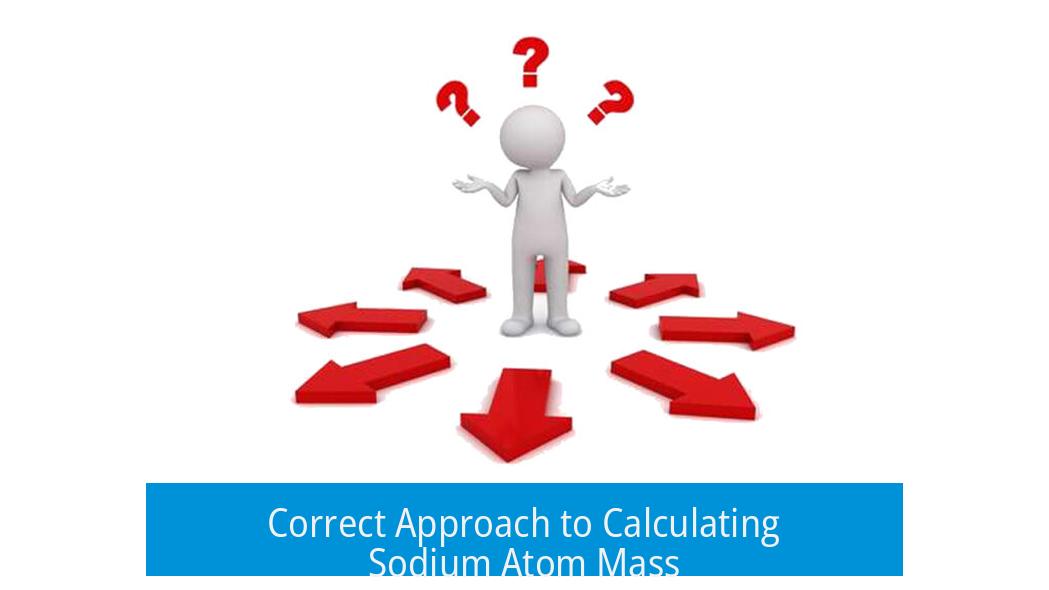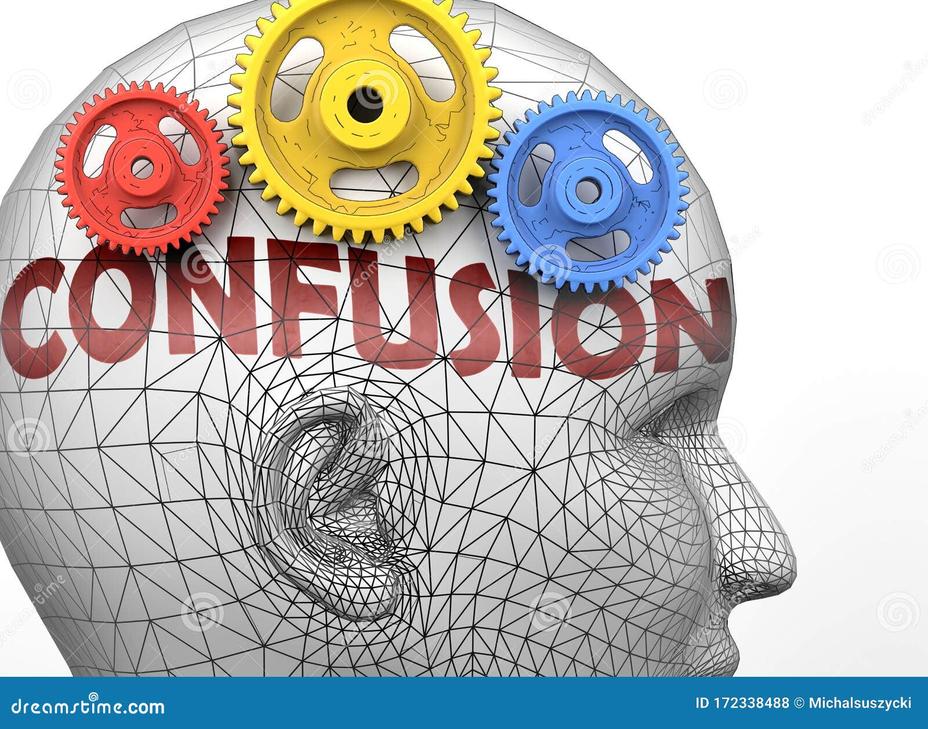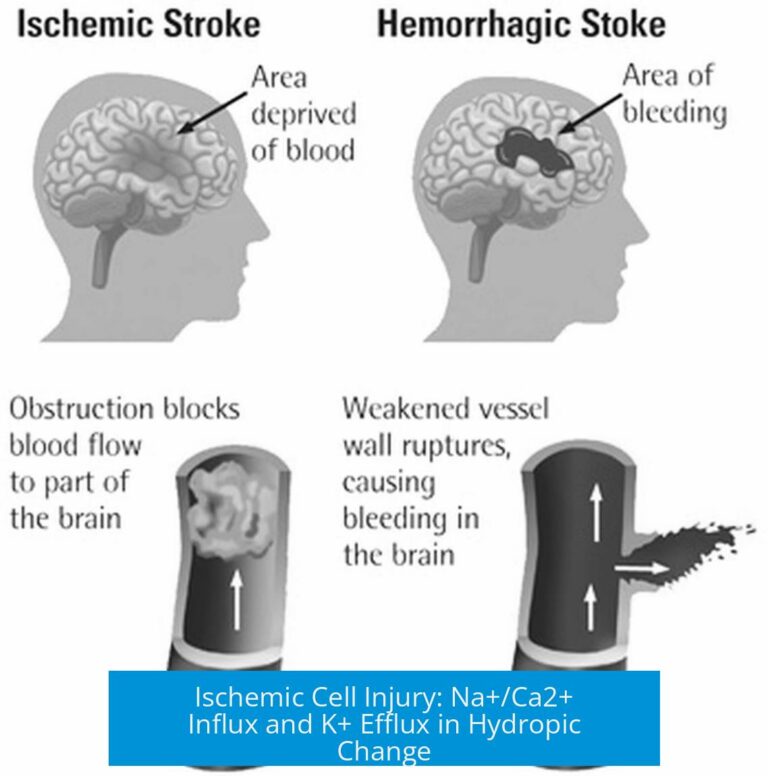Clarifying Confusion Regarding the Mass of a Sodium Atom

The confusion about the mass of one sodium atom arises mainly from inconsistent units and common errors in conversion between atomic mass units, grams, and kilograms. When handled correctly, the mass is consistently calculated as approximately 3.8 × 10-26 kilograms per atom. This article explains the sources of confusion and guides correct calculations using molar mass, atomic mass units, and Avogadro’s number.
Understanding Units and Their Differences

Atomic-scale masses involve very small quantities typically expressed in atomic mass units (u), grams (g), or kilograms (kg). The atomic mass unit is defined so that 1 u equals 1.66 × 10-27 kg.
- Using Avogadro’s number often results in mass values expressed in grams per mole.
- When converting grams to kilograms, a factor of 10-3 must be applied.
- Confusion occurs if this factor is missed, leading to differences by a factor of 1000.
This discrepancy explains why some calculated masses differ by 103. For example, a mass might be quoted as 3.8 × 10-23 kg instead of 3.8 × 10-26 kg, reflecting incorrect unit conversion.
Correct Approach to Calculating Sodium Atom Mass

There are two equivalent and consistent methods:
- Using Atomic Mass Units (u):
Given the atomic mass of sodium is approximately 23 u, convert as follows:
23 u/atom × 1.66 × 10-27 kg/u = 3.8 × 10-26 kg/atom
- Using Molar Mass and Avogadro’s Number:
The molar mass of sodium is 23 g/mol or 23 × 10-3 kg/mol. Dividing by Avogadro’s number (6.022 × 1023 atoms/mol) gives:
(23 × 10-3 kg/mol) ÷ (6.022 × 1023 atoms/mol) = 3.8 × 10-26 kg/atom
Both methods yield the same mass when units are consistently applied.
Common Mistakes in Unit Conversion

A frequent error is neglecting the 10-3 factor when converting grams to kilograms. The molar mass in grams must be converted to kilograms before dividing by Avogadro’s number to obtain mass per atom. Skipping this leads to masses that are off by a factor of 1000.
Significance of Avogadro’s Number and Atomic Mass Unit

Avogadro’s number ties molar quantities to atomic-scale measurements. Interestingly, the inverse of Avogadro’s number in kg/mol closely corresponds to the atomic mass unit (approximately 1.66 × 10-27 kg). Thus:
Atomic mass unit (kg) ≈ (1 mol) ÷ (6.022 × 1023) atoms = 1.66 × 10-27 kg
This relationship underpins conversions between atomic mass units and kilograms.
Atomic Mass and Isotopic Considerations
The atomic mass of sodium, 22.9897 u, represents the mass of a single sodium atom, specifically of its most common isotope, sodium-23. Atomic mass reflects the combined mass of protons and neutrons in the nucleus.
The atomic mass number (A) equals the sum of protons (atomic number, Z) and neutrons (N):
| Symbol | Definition | Value for Sodium-23 |
|---|---|---|
| Z | Number of protons (atomic number) | 11 |
| N | Number of neutrons | 12 |
| A | Mass number (N+Z) | 23 |
Almost all of the atom’s mass concentrates in its nucleus, which is extremely dense but occupies a minuscule fraction of the atom’s volume (~10-12 of total atom volume). Electrons contribute negligible mass.
Summary: Calculating One Sodium Atom’s Mass
To calculate the mass of one sodium atom accurately:
- Use the atomic mass (≈23 u) and convert to kg per atom using the atomic mass unit in kilograms.
- Alternatively, divide the molar mass in kilograms per mole by Avogadro’s number.
- Apply proper unit conversions to avoid errors by factors of 103.
Both methods yield approximately 3.8 × 10-26 kg for one sodium atom.
Key Takeaways
- The mass of one sodium atom is ~3.8 × 10-26 kg when units are consistent.
- Atomic mass units (u) and molar mass approaches are equivalent when converted properly.
- Failing to convert grams to kilograms results in a 103 magnitude error.
- Avogadro’s number connects atomic scale masses to molar scale masses.
- Atomic mass reflects mass of nucleus, primarily protons and neutrons.
Clearing Up the Confusion About the Mass of a Sodium Atom
Ever scratched your head wondering why the mass of a sodium atom sometimes looks like it’s playing tricks on you? Turns out, it’s not magic—it’s mostly about units and conversions. The confusion pops up because of how people mix grams and kilograms and how atomic and molar masses relate.
The real answer: The mass of one sodium atom is approximately 3.8 × 10-26 kilograms, and this fits perfectly whether you calculate it from atomic mass units or molar mass divided by Avogadro’s number. The catch? Using inconsistent units can make it look like the number is off by a factor of 1000.
Why Do Units Cause So Much Trouble?
First off, the atomic mass unit (u) is tiny, about 1.66×10-27 kilograms. The atomic mass of sodium is around 23 u. So multiplying 23 by 1.66×10-27 kg/u gives:
23 × 1.66×10-27 kg = 3.8×10-26 kg per atom.
Seems straightforward, right? But if you try calculating mass using molar mass and Avogadro’s number, small slips in unit conversion create headaches. The molar mass of sodium is given as 23 grams per mole. Here’s where confusion creeps in — grams versus kilograms.
Many calculations simply divide 23 g/mol by Avogadro’s constant (approx. 6.022×1023 atoms/mol), resulting in:
23 g/mol ÷ 6.022×1023 atoms/mol ≈ 3.8×10-23 g per atom.
Looks different? At first glance, yes—but remember, the atomic mass in kilograms requires converting grams into kilograms by multiplying by 10-3. Without that, you’re off by a factor of 1000 (103) and the atom’s mass looks 1000 times bigger than it really is.
Applying the Correct Unit Conversion
The proper method:
- Take the molar mass in grams per mole (23 g/mol).
- Convert grams to kilograms by multiplying by 10-3, making it 23×10-3 kg/mol.
- Divide by Avogadro’s number: (23×10-3 kg/mol) ÷ (6.022×1023 atoms/mol).
This yields:
≈ 3.8×10-26 kilograms per atom, exactly matching the atomic mass unit conversion.
It’s like giving your calculator the right glasses—everything suddenly makes sense.
Why Is Avogadro’s Number So Important?
Avogadro’s number (6.022×1023 atoms per mole) is the bridge between the atomic scale and everyday measurements. One mole of sodium atoms weighs about 23 grams, but individual atoms are microscopic. Dividing mass of one mole by Avogadro’s number converts “per mole” quantities to “per atom.”
Here’s the neat part: if you take the reciprocal of Avogadro’s number and multiply it by a kilogram per mole, you get the kilogram equivalent of a single atomic mass unit, roughly 1.66×10-27 kg. This ties atomic mass units and mole-based measurements perfectly.
Sodium’s Atomic Mass: What Does It Really Mean?
The atomic mass of sodium is about 22.9897 u, reflecting the weighted average mass of its naturally occurring isotopes. This value relates to the mass of one atom and depends on its isotope composition.
You might wonder, “How does this relate to protons and neutrons?” Sodium typically has 11 protons and 12 neutrons (11 + 12 = 23 mass number), almost all its mass is in the nucleus. The electrons barely add mass, so the atomic mass is mostly from nuclear particles. This explains why the molar mass number hovers around 23.
Common Pitfall: Forgetting Conversion Scale
It’s easy to forget the 10-3 when turning grams into kilograms. This slip inflates your sodium atom’s mass by a factor of 1000. That’s why some textbooks or sources might show a sodium atom’s mass as 3.8×10-23 kg instead of 3.8×10-26 kg.
So, if your calculation seems “off,” double-check the units! Grams and kilograms are siblings, but they speak very different numerical languages.
Why Does This Matter? Practical Importance
Besides satisfying your curiosity, understanding the precise mass of an atom is crucial in fields like chemistry, physics, and materials science. For example, in stoichiometry, engineers need accurate atomic masses to predict how much material reacts or produces a product.
In nanotechnology or atomic-scale physics, tiny inaccuracies magnify quickly. A missing 10-3 factor could throw off sensitive calculations in molecular mass or reaction rates.
Wrapping It Up: The Golden Rule of Mass Calculations
- Use consistent units throughout.
- Remember 1 g = 10-3 kg.
- Atomic mass units convert to kilograms via 1 u = 1.66×10-27 kg.
- Molar mass in kg/mol divided by Avogadro’s number = mass per atom in kg.
- Checking both methods gives you confidence your answer is sound.
In summary: Confusion about the sodium atom’s mass usually boils down to overlooked unit conversions rather than actual disagreement about values. By minding units and conversion factors closely, the puzzle pieces fit perfectly, revealing that a sodium atom weighs about 3.8×10-26 kilograms.
Now, next time you see vastly different numbers representing the mass of a sodium atom, you’ll smile knowingly, realizing it’s just a classic unit drama. Who knew atomic mass could be so entertaining?
Why does the mass of a sodium atom sometimes appear as grams instead of kilograms?
Using Avogadro’s number often gives mass in grams, not kilograms. This causes a difference by a factor of 10³ when converting units, leading to confusion.
How can the mass of a sodium atom be calculated consistently?
Multiply the atomic mass in atomic units (23 u) by 1.66 × 10⁻²⁷ kg/u or divide 23 g/mol (converted to kg) by Avogadro’s number. Both ways yield about 3.8 × 10⁻²⁶ kg per atom.
What’s a common mistake when converting the atomic mass of sodium to kilograms?
People often forget the 10⁻³ factor when converting grams to kilograms. Missing this converts 23 g to 23 kg, causing the mass value to be three orders of magnitude too large.
How does Avogadro’s number relate to the atomic mass unit in kilograms?
The inverse of Avogadro’s number in kg/mol equals about 1.66 × 10⁻²⁷ kg, which is the atomic mass unit in kilograms. This shows the direct link between the molar scale and atomic mass units.
Why might dividing 23 g by Avogadro’s number sometimes give a wrong mass for sodium?
If units aren’t converted properly, especially grams to kilograms, the result can show 3.8 × 10⁻²³ kg instead of 3.8 × 10⁻²⁶ kg, causing confusion over which is correct.
What defines the atomic mass of sodium?
The atomic mass (22.9897 u for sodium) is the mass of a single atom and refers to a specific isotope. It mainly depends on the number of protons and neutrons in the nucleus.





Leave a Comment